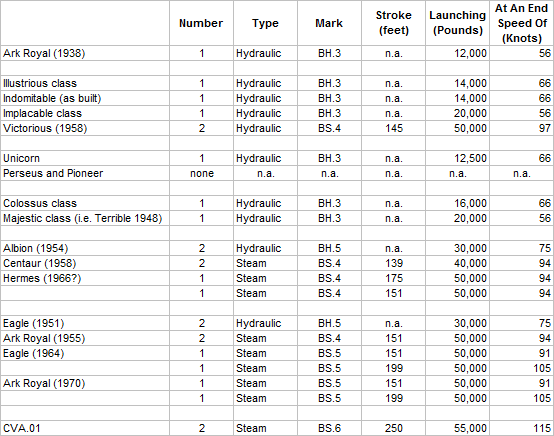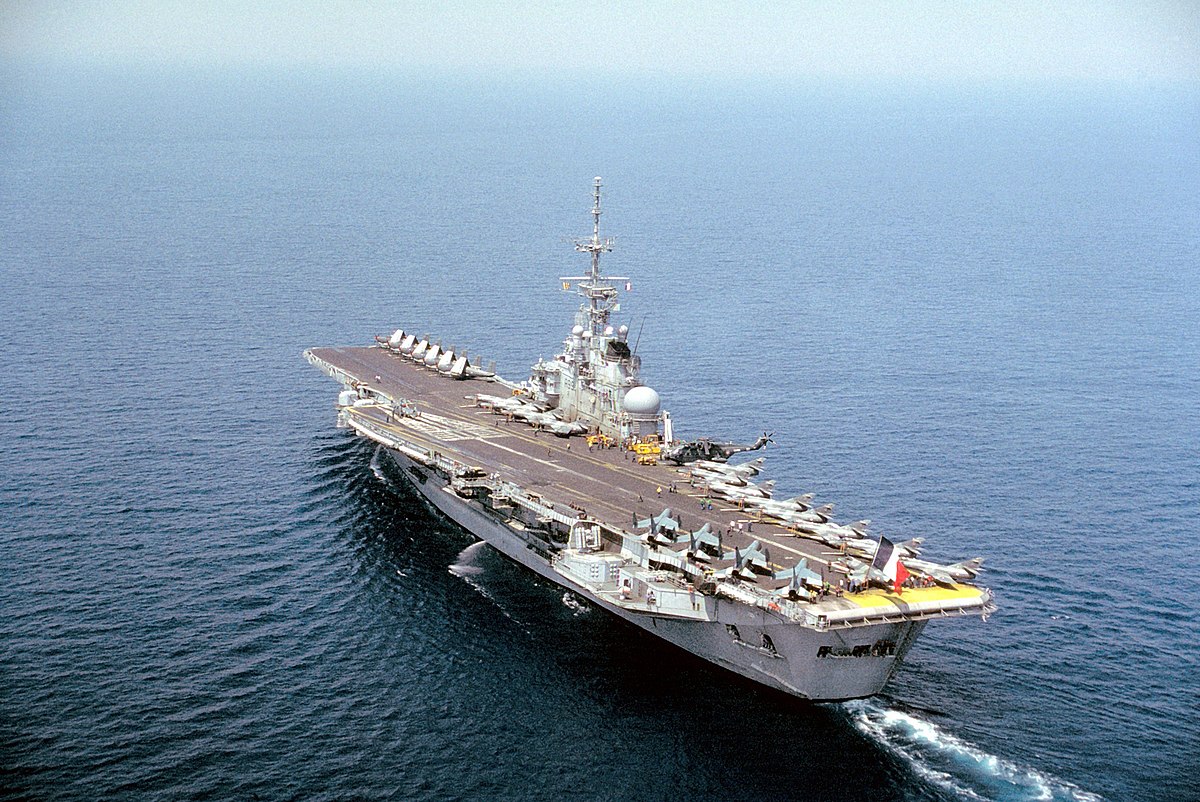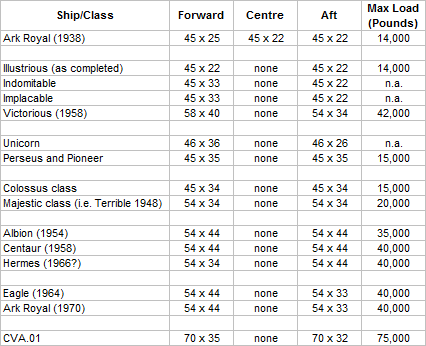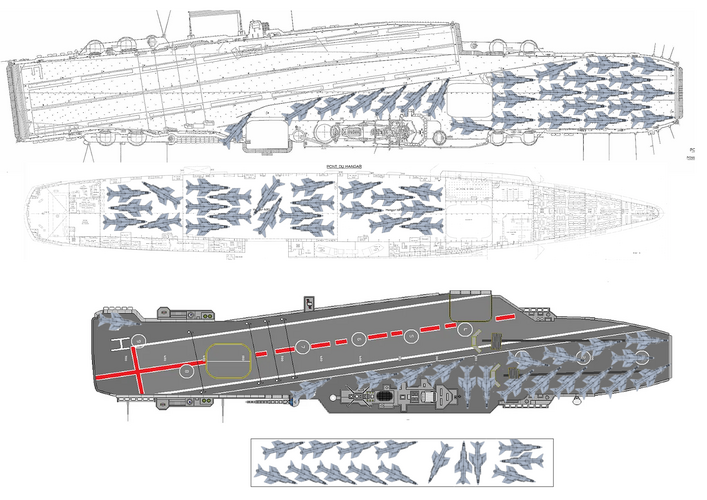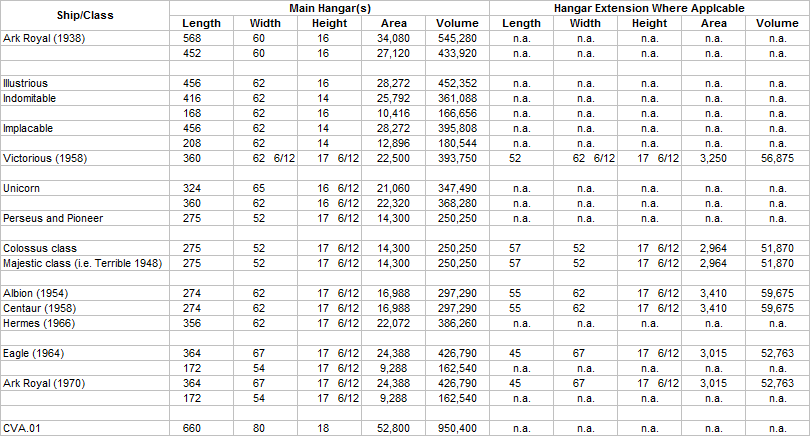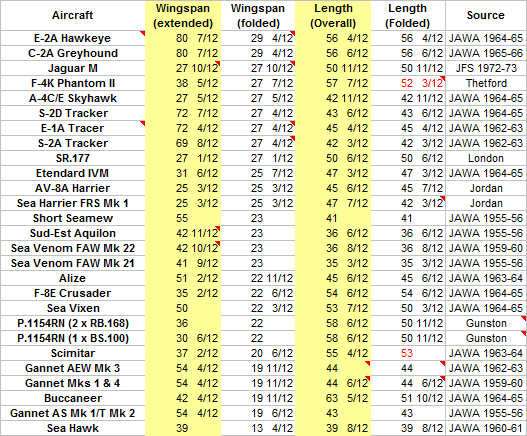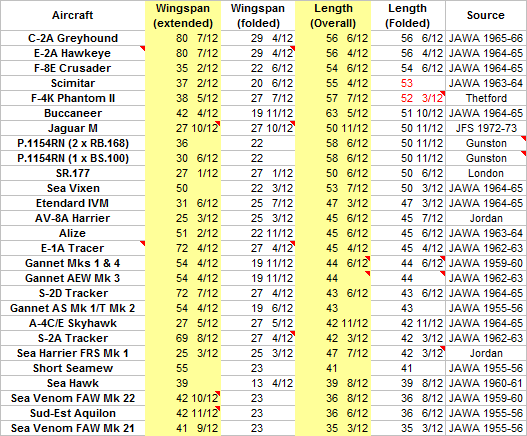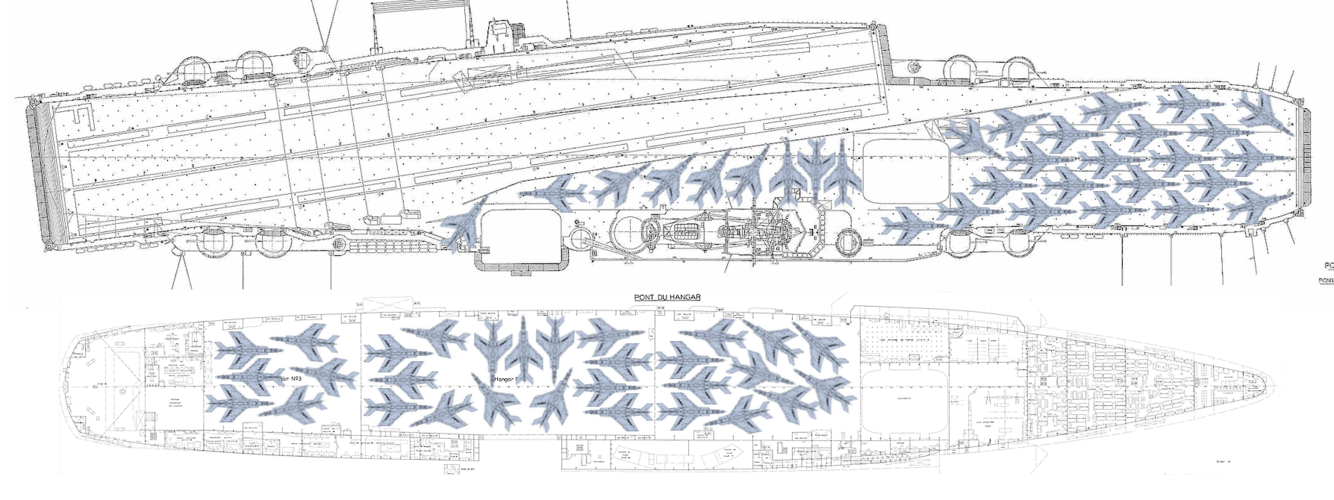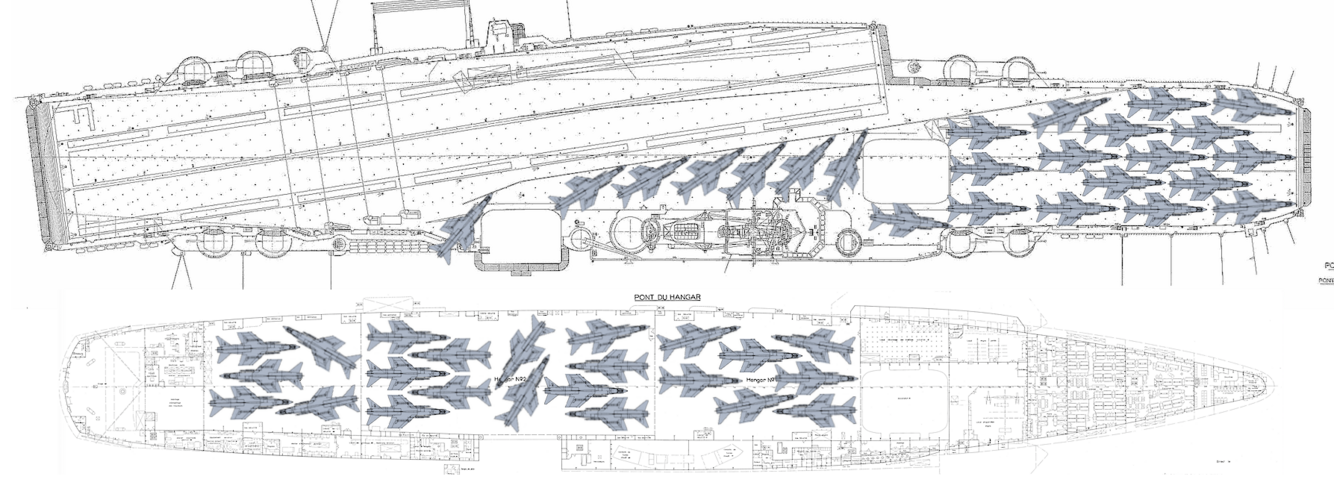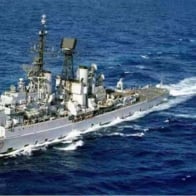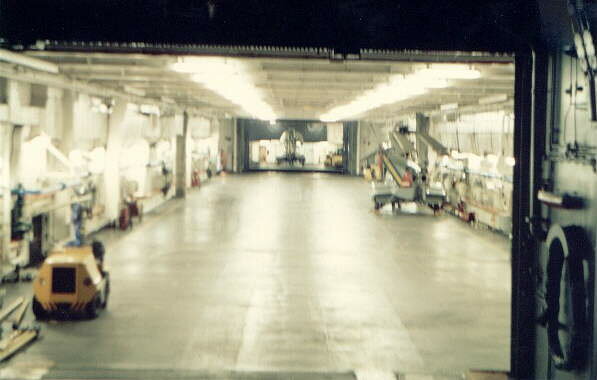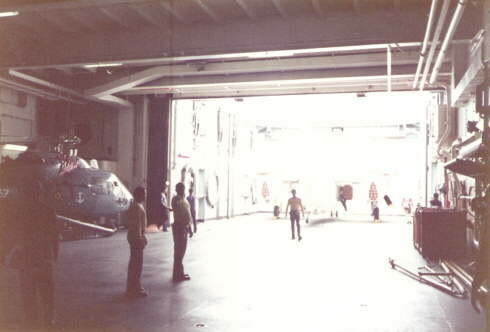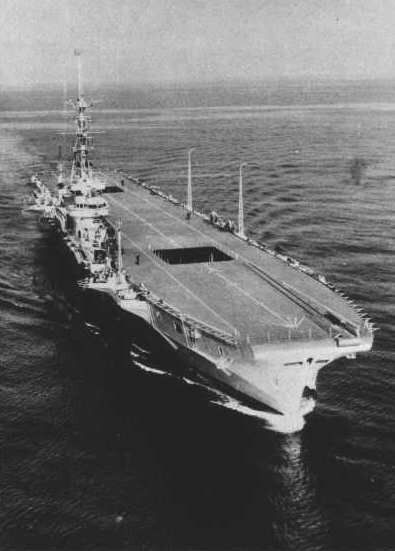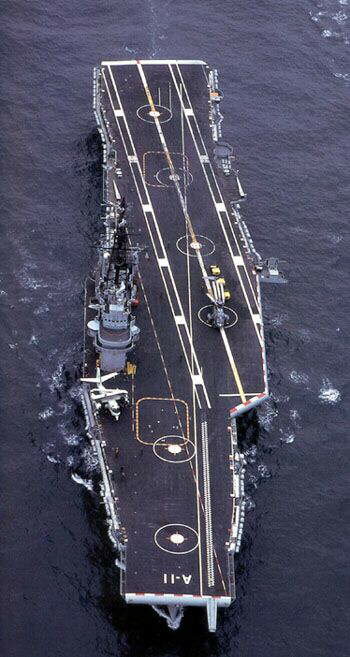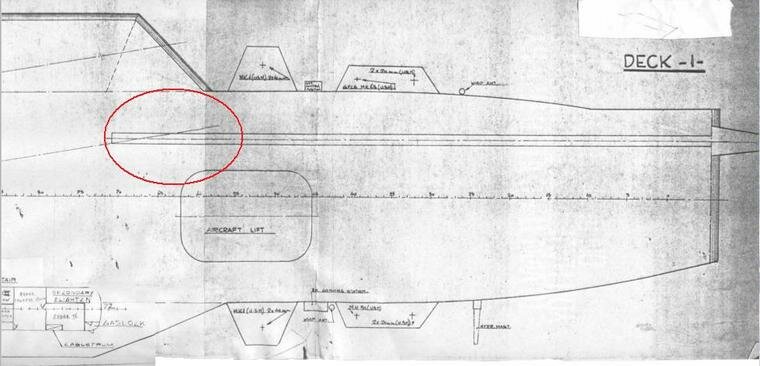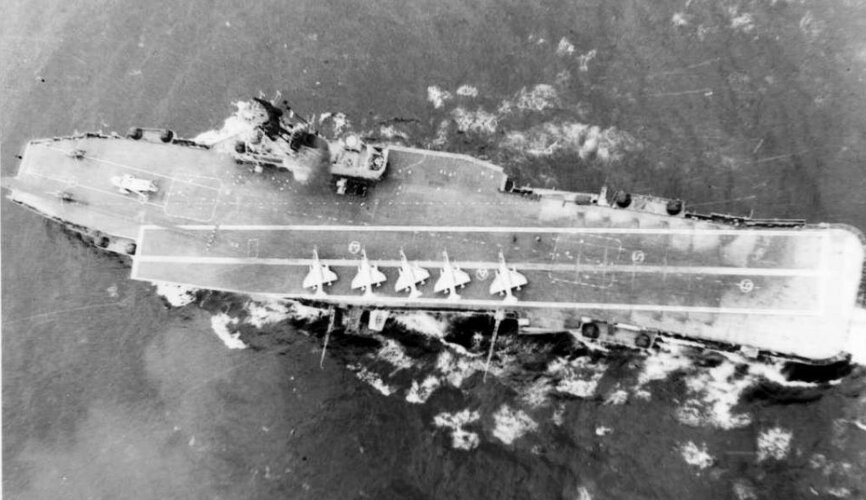Link to the Opening Post - i.e. Post 1.
Link to Post 61.
Link to Post 76.
I addressed some of your comments in Post 61.
The 10 Colossus class were designed to operate aircraft weighing up to 15,000lb. The 6 Majestic class were ordered as Colossus class but they were modified to operate 20,000lb aircraft whilst under construction. The Centaur class was designed to operate 30,000lb aircraft and that was the major reason for the increase in size and more powerful machinery.
So firstly the Admiralty has to introduce the 30,000lb aircraft limit early enough for the first 16 light fleet carriers to be built as Centaurs instead of Colossuses and Majestics. My guess is that it has to be at least two years earlier. I have no idea what would make them do that.
I still have no idea what would make them do that.
However, the Opening Post asks, what if they did it? Not, why would they do it?
Neither was the Opening Post intended to provoke several dissertations on all the (admittedly good) reasons why they wouldn't and/or couldn't do it.
The next problem is to find the extra labour and steel needed to build the larger hull and the more powerful machinery. This probably means the cruisers Blake, Hawke, Lion and Tiger are suspended before they were laid down to provide said labour and steel. They'd be re-ordered as Neptune class cruisers in 1944 and cancelled at the end of the war. The material, money and labour used 1954-61 to complete Blake, Lion and Tiger can be used to do something else and there will be no temptation to convert them into interim escort cruisers because they won't exist.
I thought it was implicit (although admittedly not explicit) when I wrote it that suspending the cruisers Blake, Hawke, Lion and Tiger would allow the 16 Centaurs built instead of the 16 Colossus/Majestic class to be built in the same length of time as well as providing the labour and material required to build the larger hulls and more powerful machinery.
I didn't explicitly say so by writing it in the post, because my writing speed make's Paul Simon's work rate look like Prince's (for example I began writing this soon after you uploaded Post 76) and my intention was to write a summary and it was becoming more detailed, a lot longer in length and taking a lot longer in time to write than I'd intended.
Since then I've come to the conclusion that it would be necessary to sacrifice the cruisers Minotaur, Swiftsure and Superb to provide the necessary labour and materials (in particular the extra boilers) to build 16 Centaur class instead of the 16 Colossus and Majestic class ships
AND in the same length of time.
Before your reply I'm aware that Minotaur and Swiftsure were laid down before the first Colossus. I'm also aware that Tiger was laid down before the first Colossus too. However, as the decision to introduce the 30,000lb limit for aircraft carriers has to be made at least 2 years earlier in this "
version of history" there is enough time for the Admiralty to decide to suspend these ships before they were laid down.
I'm aware that the pp length of a Centaur was 20 feet longer than a Colossus/Majestic (650ft v 630ft) and the waterline beam was 10 feet wider (90ft v 80ft). Therefore, some of the ships might have to be built in different yards.
Do you know whether the slips that the seven cruisers that I'm sacrificing to build 16 Centaurs instead of 16 Colossus/Majestic class were long enough? According to Conway's 1922-46 the dimensions of Minotaur and Swiftsure were pp length 538ft and beam 63ft at the waterline.
Moving to the end of the war, with delays to laying Centaurised Colossus ships down and longer build times the result is fewer wartime completions and more ships of the class further away from completion. Without the need for for the historic Centaurs to be worked on to clear the slips money is saved but that doesn't mean that it would automatically flow to completing the Theseus & Triumph (Warrior had been promised to Canada who were keen to get into the carrier game but were happy to see Magnificent, which was not that far from completion historically, laid up). Stopping work on Majestic, Leviathan, Powerful & Terrible historically saved about £3.2m. That sum would be greater if they were building as Centaurs.
I've already explained why I think the ten
Centaurised Colossus ships (plus Magnificent and Terrible) which were twelve ships completed by the end of 1948 in the
"real world" would be laid down at the same time and completed in the same length of time.
According to Marriott in Royal Navy Aircraft Carriers 1945-1990 HMAS Melbourne (ex-Majestic) cost £A8,309,000 when completed in 1955 and Centaur cost £10,500,000 Sterling when completed in 1953. As far as I know the exchange rate at the time was £A1.00 = £1.25 Sterling so Melbourne's cost was £10,386,000 Sterling rounded down to the nearest thousand. I don't know how much HMAS Sydney and HMCS Magnificent cost when completed in 1948. It was probably less because of inflation and neither of them had a steam catapult.
Off the top of my head HM Treasury was paying about £600 million a year to service a National Debt of £32 billion in the second half of the 1940s and £12.8 million (I'm assuming that it was £3.2 million per ship) is a trifling sum in comparison.
As I understand it the Admiralty's problem in the Austerity Era wasn't a shortage of money. It was a shortage of shipbuilding resources which had to be concentrated on building merchant ships to replace war losses so the Merchant Navy could earn more badly needed foreign currency and on foreign orders as part of the Export Drive because the Treasury needed all the foreign currency the British economy could earn. That's the overriding reason for the cancellation and/or suspension of so many ships at the end of the war and why the ships that were completed took so long to build.
So it's more a question of whether the material resources were available to complete the ships by the end of 1948, rather than the financial resources and if they weren't what had to be sacrificed. I had earlier written that the resources released by cancelling Albion, Bulwark, Centaur and Hermes at the end of the war (or not laying them down in the first place) were used to accelerate the completion of Ark Royal & Eagle and complete the third Audacious. I might have to revise that and say that between 1946 and 1948 they were used to complete Hercules, Leviathan, Majestic and Powerful by the end of 1948.
Before anyone replies. I appreciate that the resources required to complete the fitting out of a ship may not be the same as the resources required to complete a ship as far as the launching stage.
They probably go straight into reserve or other ships have to be paid off to provide the crews, which is something I intend to discuss in a later post.
According to Conway's 1922-46 the original design of the Centaur class had a crew of 1,380 which is 80 more than the 1,300 it quotes for the Colossus and Majestic classes. My guess is that the difference was due to the Centaurs having machinery that was twice as powerful.
Part Two (if I ever write it) will be about how they will be used by foreign navies that operated Colossus and Majestic class carriers in the
"real world" and whether they will have the men and money to make use of the extra capability of the Centaur design.
Part Thee (if I ever write it) is intended to be what happens between 1948 and the Suez War which takes in the Nine Year Plan, Revised Restricted Fleet, the 1951 Rearmament Programme and the Radical Review of 1954.
Part Four (if I ever write it) is intended to be the Sandys Defence Review through to the late 1960s or 1970s.
However, at present I'm busy writing replies to the replies to Part One.

